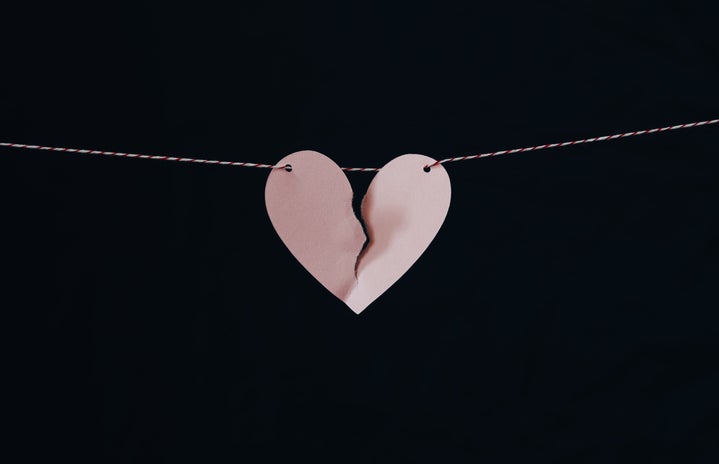After watching A Ballad of Songbirds and Snakes, the recent Hunger Games prequel, I, like many other viewers, was entranced by the character of Coriolanus Snow. Despite his wicked traits, his moments of kindness, intellect, and charisma had me rooting for his character. This made me wonder: Why do we fall for the villain?
The more I considered this predicament, the more I realized that this is a common trend in the sphere of media, present in books, TV shows, movies, fan fiction, and other entertainment mediums. Turns out there’s a psychology behind why we are drawn to the villain.
Desirable traits
Villains, despite being the obvious antagonist of a story, oftentimes have desirable traits that captivate viewers. For one, they can be attractive. According to the article The Psychology On Why Villains Are So Attractive, “For both sexes, lively movements, facial averageness, as well as social or financial dominance seems to be a core value for most ideal relationships.” By finding a sense of attraction in the villain, it is easier for us to see them as more than their undesirable traits and be able to relate to them in some sense.
Traits such as intelligence, athleticism, expressiveness, and aggressiveness are frequently characterized as desirable in relationships. After all, the combination of intellect and good looks is what grants them attention.
This is certainly true in the case of Coriolanus Snow. Most viewers watched A Ballad of Songbirds and Snakes already knowing the cruel personality of President Snow in The Hunger Games, but they chose to ignore this when getting a closer look at his attractiveness and charisma. Not only does Snow sport various hairstyles and manage to pull them all off, but his sharp wit and calculating tact is what allow him to survive, and help Lucy (his romantic interest played by Rachel Zegler) survive, as well. With the release of the movie began a trend of Snow edits on TikTok, romanticizing his character. I’m not beyond admitting that he’s handsome and charismatic, but let’s not forget that this movie is Snow’s villain origin story.
Other examples of popular villains in media today are The Darkling from Shadow and Bone, Draco Malfoy and young Tom Riddle, from the Harry Potter series, and Damon Salvatore from The Vampire Diaries. They all share the common traits of attractiveness and intrigue, having viewers thinking about them for longer and, as such, interpreting this as romantic appeal.
empathy
Another element that causes us to fall for the villain is empathy. Usually villains go through a traumatic experience that causes them to act this way, making them victims themselves. As such, we are able to see them in a different light, because we know the cause of their darkness later on.
Snow, for example, witnesses the ruin of his homeland and the death of his family, forcing him into poverty and ridicule by his wealthier peers. He enters survival mode, ultimately shaping him into the villain he is. Despite knowing the evil ruler he will become, we still empathize with young Snow’s misfortunes and the paradox of either being stuck in the Hunger Games or helping facilitate it.
A part of this empathy is also bonding with fictional characters who we can see ourselves in. Psychologists claim that we are intrigued by villains in media because it allows us to explore our own darkness, or our “shadow selves” (Psychology Today) without actually carrying out such acts. We may not agree with a villain’s actions, but one may find themselves being able to relate to traits such as detail orientation, intelligence, neuroticism, etc., that are often present in villains. Therefore, we may find complexity and even humanity in villainous characters.
“I can fix him”
Our attraction to the villain may even stem from the “I can fix him” complex. From a young age, patriarchal society teaches us that girls mature faster than boys and that it is a woman’s duty to be nurturing. Thus, many women believe that it is their job to be responsible for or “fix” their partners when in reality, this is an extremely harmful mentality. It can lead to making excuses for a partner who is emotionally unavailable, or in the subject of this article, a villain in the media we consume, and view abusive behavior as mendable.
A popular “villain” that this mentality is applied to is Damon Salvatore from The Vampire Diaries. While he has a redemption arc throughout this 8-season drama, he often displays toxic and heartless behavior. However, because of his good looks, charm, and occasional moments of humanity, characters in the show and viewers alike excuse his behavior and root for the main character Elena to end up with him, even more so than his more good-natured brother, Stefan.
Sure, adopting this mindset might make us feel wanted or loved in the moment, but once we take a step back, we can acknowledge that it perpetuates a very outdated and dangerous mindset.
takeaway
At the end of the day, villains make for more interesting stories and make us question our own morals and values. I love a good villain in media because, in reality, everyone possesses both good and bad traits. However, it’s extremely important to remember to make the distinction between fiction and reality. It’s one thing to find the villain’s intellect and charm attractive, but we have to be careful in how we talk about morally grey behavior in real life, as it can become so easy to internalize and accept as okay when it’s not.
Who are some of your favorite villains in media?


